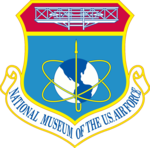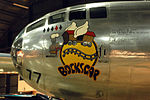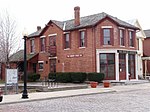Stebbins High School

Walter E. Stebbins High School is part of the Mad River Local School District. The school is located in Riverside, Ohio, United States and serves over 1000 students. Stebbins's mascot is the Indian. The new portion of the school building was opened in August 2005. Stebbins is well known for its technical prep program, which offers a "major" for students in fields such as Graphic Design, HVAC, Construction, Manufacturing, and Engineering. Those who complete the two-year program also receive a scholarship to Sinclair Community College. Stebbins met ten of the twelve state indicators for the 2010–2011 school year (missing the State targets for 10th and 11th Grade Science), earning it an "Effective" rating.The AFJROTC red beret drill team won state titles for 18 years in a row, as well as four national titles.On February 29, 2008, Stebbins won its first team Ohio High School Athletic Association state championship in any sport when the Boys' Bowling team beat Centerville 802–766. As of 2019–20, Stebbins is a member of the Miami Valley League (MVL).
Excerpt from the Wikipedia article Stebbins High School (License: CC BY-SA 3.0, Authors, Images).Stebbins High School
Harshman Road,
Geographical coordinates (GPS) Address Nearby Places Show on map
Geographical coordinates (GPS)
| Latitude | Longitude |
|---|---|
| N 39.796667 ° | E -84.127778 ° |
Address
Harshman Road 1900
45404
Ohio, United States
Open on Google Maps









